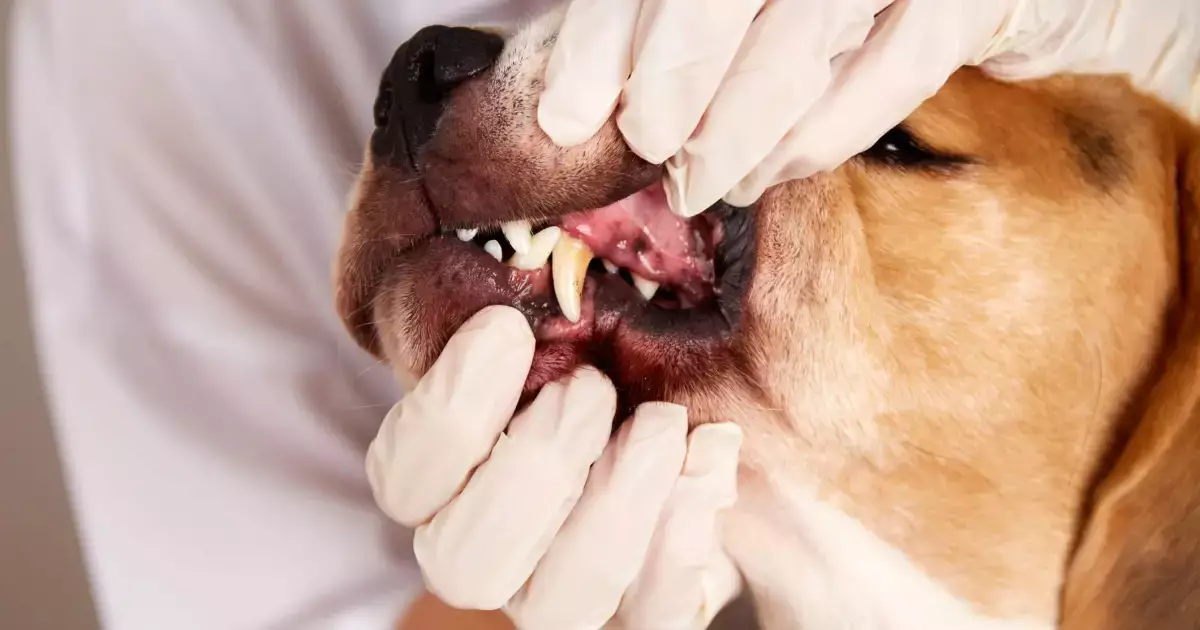Periodontal disease, often referred to as gum disease, is a prevalent condition that affects many canines, particularly those over the age of three. This ailment is characterized by inflammation and infection of the tissues surrounding a dog’s teeth, including the gums, periodontal ligaments, and the bone structure that supports the teeth. The origin of this issue typically stems from plaque accumulation, which, when neglected, hardens into tartar. This progression can result in serious complications such as gum recession, tooth loss, and systemic health issues. To comprehend its significance, it’s essential to delve into its symptoms, stages, causes, and available treatments.
The progression of periodontal disease follows a series of stages, each varying in severity and requiring different intervention methods:
1. Gingivitis (Stage 1): The initial stage of periodontal disease manifests through swollen, red gums that may bleed during routine activities like brushing or eating. At this stage, the condition remains reversible with appropriate dental hygiene, making early detection crucial.
2. Early Periodontitis (Stage 2): Following gingivitis, the disease progresses to early periodontitis, where the gums begin receding, forming pockets that harbor bacteria. Mild bone loss may occur, and bad breath often becomes prominent, signaling further dental issues.
3. Moderate Periodontitis (Stage 3): At this juncture, the disease intensifies, leading to deeper gum pockets and more significant bone loss. Dogs may show signs of discomfort, and their teeth may start loosening due to weakening support structures.
4. Advanced Periodontitis (Stage 4): The final and most severe stage involves extensive bone loss, severe gum infection, and possible tooth loss. At this point, dogs may experience considerable pain and may struggle with normal activities such as eating.
Recognizing the early signs of periodontal disease is imperative for successful intervention. Early-stage symptoms can be subtle and easily overlooked, so dog owners must regularly examine their pets’ mouths. Common indications include:
– Red, Swollen Gums: Healthy gums should be a pale pink; any discoloration may signal gum disease.
– Bad Breath (Halitosis): Persistent bad breath is often one of the first noticeable signs of dental issues.
– Reluctance to Eat: If a dog hesitates to eat or chew, it may be due to discomfort resulting from gum inflammation.
– Tartar Buildup: Visible tartar on the teeth is a clear indication of neglecting dental hygiene.
As the disease progresses, dogs may display more alarming symptoms, such as:
– Loose or Missing Teeth: Significant periodontal disease can lead to the loss of teeth, which will impact a dog’s ability to chew.
– Abscesses: Pus or abscess formations around teeth indicate severe infection.
– Behavioral Changes: Increased irritability or withdrawal may result from ongoing pain or discomfort.
Understanding the Causes and Risk Factors
The primary driver of periodontal disease is the accumulation of plaque, a sticky biofilm composed of bacteria. This biofilm mineralizes into tartar and leads to the onset of gingivitis if proper dental care is lacking. Various factors exacerbate the risk of a dog developing periodontal disease, including:
– Age: As dogs age, they are more vulnerable due to prolonged exposure to plaque.
– Breed: Smaller breeds, particularly toy dogs, often exhibit dental crowding, which can trap food and plaque.
– Diet: Diets rich in soft foods may contribute to higher plaque buildup.
– Oral Hygiene: Inadequate brushing and lack of routine veterinary dental cleanings dramatically heighten risk.
Addressing periodontal disease requires a multifaceted approach combining veterinary intervention and at-home care. The treatment plan typically includes:
– Professional Dental Cleaning: Conducted under anesthesia, this procedure entails scaling to remove plaque and tartar from the surface and beneath the gum line, often the critical first step in treatment.
– Antibiotics: In cases where infection accompanies periodontal disease, antibiotics help combat bacteria, easing inflammation and pain.
– Tooth Extraction: Severely damaged teeth may necessitate extraction to prevent further complications and relieve pain.
– Surgical Options: For advanced stages, surgical procedures such as flap surgery or bone grafting might be required to restore oral health.
While periodontal disease can cause irreversible damage, proactive measures can significantly mitigate its impact. Prevention is often more effective and less expensive than treatment. Strategies include:
– Routine Brushing: Daily tooth brushing can dramatically reduce plaque buildup. Always use dog-specific dental products.
– Dental Chews and Toys: Providing specially formulated dental chews can help manage plaque and promote gum health.
– Balanced Diet: Feed a diet rich in nutrients, including options formulated for dental health, to discourage plaque formation.
– Regular Veterinary Check-ups: At least annual dental check-ups are crucial for early detection and intervention.
Although periodontal disease is not inherently life-threatening, its untreated progression can lead to serious health complications affecting a dog’s quality of life. Pet owners must remain vigilant about their dog’s dental health to detect issues early and prevent long-term consequences. By integrating consistent oral care and regular veterinary visits into their routines, dog owners can significantly enhance their pets’ overall health and wellbeing.

